Welcoming New Global Partners to the Conservation Allies Family

We are thrilled to announce the addition of three remarkable organizations to our growing network of conservation partners—bringing our total to 47 partners worldwide. These new collaborations not only strengthen our mission to protect the world’s most threatened ecosystems and empower local conservation leaders, but also mark an exciting expansion into regions where conservation support is urgently needed yet often under-resourced. By partnering with grassroots organizations in these areas, we are able to help channel critical funding and technical assistance into places where biodiversity is both extraordinarily rich and under severe threat. Meet our newest allies: Asociación Ecológica de San Marcos de Ocotepeque (AESMO) – Honduras Founded in 1990 by community members in western Honduras, AESMO has pioneered a Shared Governance Model that unites local governments, cooperatives, and communities to protect vital cloud forests and watersheds that sustain over 250,000 people in Honduras and El Salvador. These cloud forests are critical habitats for many unique and threatened species, including a variety of orchids, amphibians, and migratory birds that depend on intact forest cover. AESMO’s participatory approach balances conservation with food security and resilience, addressing deforestation and water scarcity in one of Central America’s most threatened regions. Belantara Foundation – Indonesia Working across Sumatra and Kalimantan, Belantara Foundation combines science-driven conservation with community development. From restoring peatlands and planting native trees to reducing human–elephant conflict and empowering youth through education, their programs protect iconic species like the Sumatran tiger, orangutan, and elephant, along with countless other endemic plants and animals. As a new member of IUCN (International Union for Conservation of Nature), Belantara is driving sustainable landscape management in some of the world’s most biodiverse—and at-risk—ecosystems. Te Ipukarea Society – Cook Islands Based in Rarotonga, Te Ipukarea Society (TIS) is the Cook Islands’ leading voice for protecting te ipukarea, “our heritage.” Through advocacy, education, and community action, TIS tackles threats from invasive species, overfishing, and emerging risks like deep-sea mining. Their conservation work focuses heavily on safeguarding native birds, including important breeding populations of shearwaters and petrels that are vulnerable to invasive predators. Their efforts blend traditional knowledge with modern conservation science to protect the islands’ rich marine and terrestrial biodiversity for future generations. These partnerships not only broaden our geographic impact but also bring fresh strategies and inspiring local leadership into our shared mission. From the cloud forests of Central America to the coral reefs of the South Pacific, Conservation Allies is committed to supporting these already highly-effective organizations with the funding, tools, and visibility they need to thrive.
Conservation Allies Joins Madagascar National Parks to Strengthen Biodiversity Protection
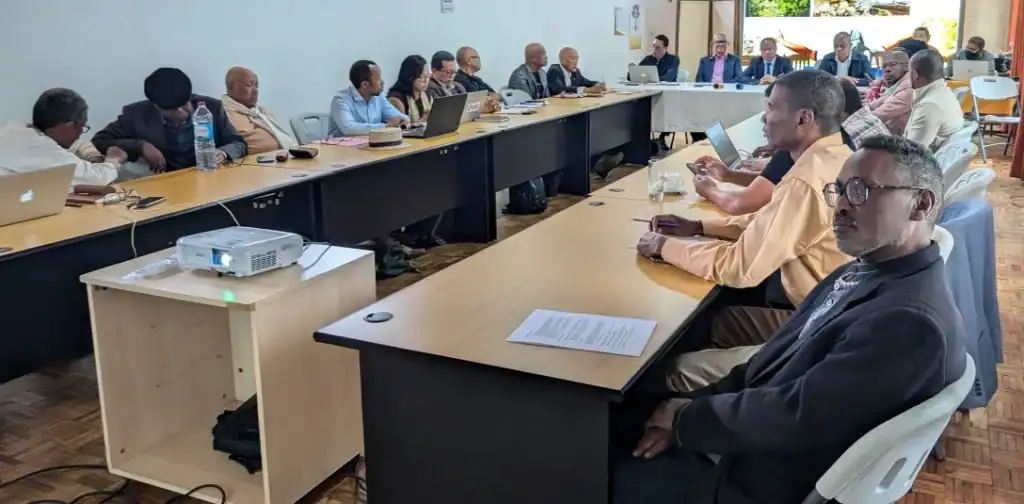
Conservation Allies is proud to join the General Assembly of Madagascar National Parks (MNP), marking a significant milestone in our long-term commitment to safeguarding Madagascar’s irreplaceable biodiversity. As a trusted partner of multiple grassroots organizations working in and around Madagascar’s Protected Areas, we are enthusiastic about this opportunity to contribute even more directly to the island nation’s conservation efforts. MNP plays a central role in preserving Madagascar’s unique biodiversity, managing over 40 national parks and reserves across the island. Its efforts support not only species and ecosystem protection but also fosters sustainable development and improved livelihoods for local communities. As a member of the General Assembly, Conservation Allies will support MNP’s conservation objectives and participate in organizational governance. Assembly members help set strategic direction, approve reports, and appoint auditors. This strategic partnership strengthens the collaboration between national and international stakeholders and amplifies our shared goal of preserving Madagascar’s extraordinary natural heritage for generations to come.
New Hope for the Critically Endangered White-bellied Heron in Bhutan
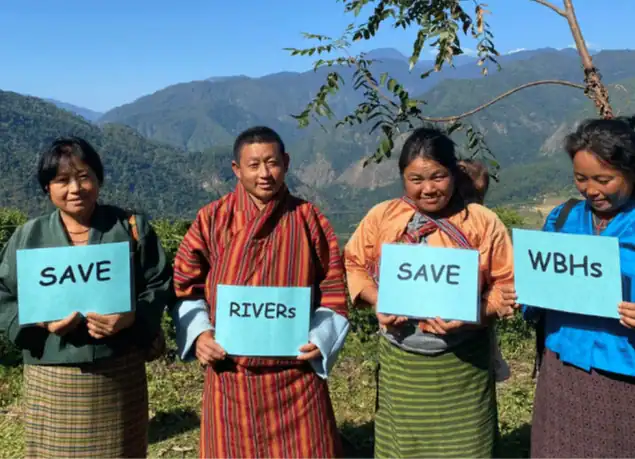
The Royal Society for Protection of Nature (RSPN Bhutan), a Conservation Allies partner, recently completed their 2025 annual survey of the Critically Endangered White-bellied Heron (Ardea insignis). Known for being one of the rarest birds in the world, this species faces immense threats across its limited range in Bhutan, India, and Myanmar. One of RSPN Bhutan’s main projects is to reverse the decline of this species. This year’s survey—conducted from March 3 to 7—counted a total of 29 individuals in Bhutan, including 24 in the wild and 5 at the White-bellied Heron Conservation Center (WBHCC). This represents a 15% increase from 2024. The survey covered 17 of Bhutan’s 18 identified habitat zones using targeted field efforts and digital tools. The majority of wild sightings occurred in the Punatsangchhu River basin, where 12 individuals were observed. Four active nests were also documented—three in the Punatsangchhu basin and one in the Mangdechhu basin—signaling hopeful, though fragile, breeding success. In addition to the heron data, surveyors recorded 178 bird species and 16 mammal species across the landscape, highlighting the region’s rich biodiversity. However, the survey also documented escalating threats to riverine ecosystems, primarily from habitat loss, infrastructure development, and pollution. RSPN Bhutan’s efforts to mitigate these impacts include habitat restoration, community outreach, and the establishment of the WBHCC, where promising breeding pairs are being nurtured for future reintroductions. Conservation Allies is proud to support RSPN Bhutan in this vital work to protect the White-bellied Heron. Each year’s count not only reflects the species’ tenuous foothold in the wild, but also underscores the importance of sustained conservation action in one of its last strongholds. Support conservation action in Bhutan
New Plant Species Discovered in Colombia’s Cloud Forest
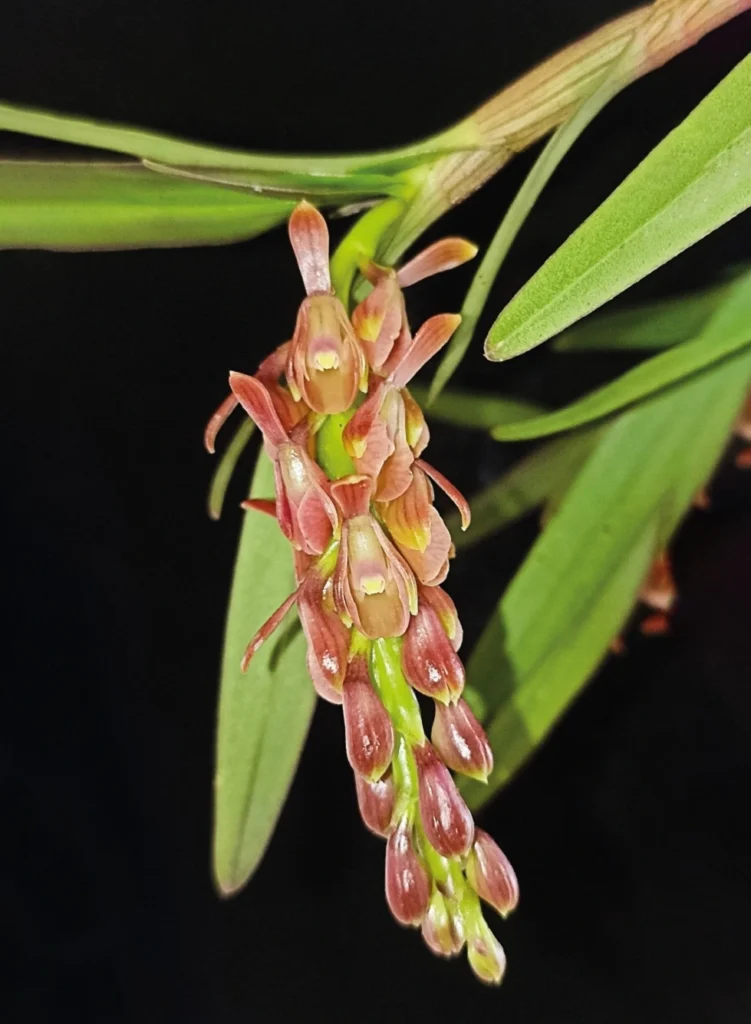
In an exciting scientific discovery, a new species of orchid, the Rasmussen Star Orchid (Epidendrum rasmussenii), has been discovered in the cloud forests of the Sierra Nevada de Santa Marta, Colombia. This remarkable find by Conservation Allies partner Fundación ProAves underscores the region’s extraordinary biodiversity and highlights the urgency of conservation efforts in these forests, one of the world’s most ecologically significant areas. The Rasmussen Star Orchid is named in honor of Nathan Jens Rasmussen, whose family has played a crucial role in supporting conservation initiatives to protect the biodiversity of the Sierra Nevada de Santa Marta. The orchid was identified within the El Dorado Nature Reserve, a protected area managed by Fundación ProAves, with support from Conservation Allies, that serves as a sanctuary for Colombia’s endemic and endangered species. The striking orchid, closely related to Epidendrum stenostachyum, is distinguished by its vibrant red-carmin and yellow-green flowers. Due to its highly restricted habitat, it is currently classified as an endangered species, reinforcing the need for continued conservation measures to protect the fragile ecosystems it depends on. “We are thrilled to support important discoveries like this one,” said Dr. Paul Salaman, President of Conservation Allies. “Rasmussen Star Orchid highlights the extraordinary biodiversity of Colombia and the critical need for sustained research and conservation efforts to protect the country’s endangered forests.” This discovery is a testament to the importance of protected areas like El Dorado Nature Reserve in preserving Colombia’s unique flora and fauna. Through scientific research, fieldwork, and dedicated conservation efforts, Fundación ProAves and other Conservation Allies partners continue to safeguard these vital ecosystems for future generations.
Emergency Rescue efforts launched to save Madagascar’s most imperiled National Park

Tsaratanana National Park was established in 1927 to protect a remote rainforest wilderness in the northern highlands of Madagascar. Recognized as a Key Biodiversity Area and an Alliance for Zero Extinction site, the park is home to 9 species of lemur, including the Endangered Black Lemur Eulemur macaco. The park is under management of Madagascar National Park (MNP). The park is experiencing severe deforestation, largely due to its isolation and the difficulty of access, which has limited protection efforts for nearly a century. Even today, reaching the park requires a two-day walk. While its remoteness once offered natural protection, it has now become its greatest vulnerability. The area has become a major hub for illicit cannabis cultivation and unregulated gold mining, leading to increased instability and danger. These activities have created serious security concerns, preventing park staff from safely entering and monitoring the area. Tragically, the park has already lost 31% of its forest cover, with an average annual deforestation rate of 1.7%—equivalent to about 3,000 acres of rainforest destroyed each year. According to the Madagascar Protected Area Outlook 2024, the park is now classified as Critically Endangered (CR). In response to the critical situation, Conservation Allies has begun supporting Madagascar National Parks (MNP) in launching a major campaign of mixed brigade patrols within Tsaratanana. These efforts are being carried out in collaboration with military and police forces to ensure the safety of MNP rangers and reinforce law enforcement in the area. Significant progress has already been made, including the confiscation of large quantities of cannabis—most notably a single seizure of 350 kg—and the arrest and imprisonment of several individuals. These actions mark a crucial step toward restoring law and order in the park. While this marks the beginning of a meaningful response to a long-standing crisis, much work remains to be done. Our goal is to secure the park in time for its 100th anniversary in 2027 and to safeguard its future for generations to come.
Conservation Allies invests in family health care to ensure a safe future for communities and parks in Madagascar
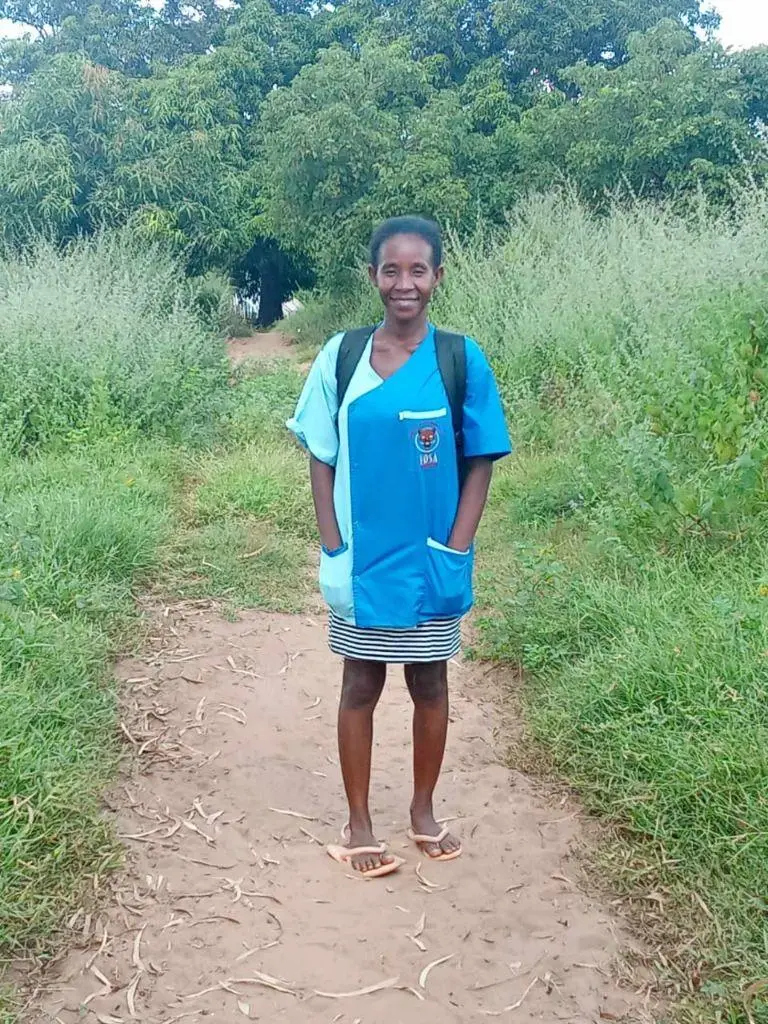
French version A collaboration between Association FOSA, Conservation Allies, and Madagascar National Parks The magnificent dry forests and vital watersheds of Madagascar’s Ankarafantsika National Park are under increasing pressure. Rapid population growth, significantly outpacing the national average, is a key driver of forest degradation around the Park, and an average 2.0% annual deforestation rate inside Ankarafantsika National Park. Over 135,000 residents, including at least 32,000 women of reproductive age, live in the 12 communes bordering the park. These communities face severe challenges, with the nearest health centers often located 10-30 kilometers away. This lack of access, combined with limited education, contributes to early unplanned pregnancies and negative socio-economic impacts. These issues not only undermine community well-being but also directly jeopardize the conservation of this critical protected area. Project Overview In response to this urgent need, Association FOSA, in partnership with Conservation Allies and Madagascar National Parks (MNP), launched the Family Planning Outreach Project on October 15, 2024. The first pilot year of the initiative is funded by Conservation Allies (over $100,000 USD) and is strategically designed to deliver accessible reproductive health services, specifically family planning education and contraceptive services, to communities around the park. By empowering women to make informed reproductive choices, the project aims to reduce demographic pressure, improve maternal health, build household resilience, and ultimately strengthen conservation efforts in the Ankarafantsika landscape. Key Strategy: Community Health Brigades The project utilizes mobile healthcare providers, known as Community Health Brigades (CHBs), as a cornerstone of its strategy. Initially planned for four providers, this was quickly scaled to six highly motivated nurses based on initial field assessments – four experienced former Marie Stopes providers and two newly graduated local paramedics ensuring sustainability. These six CHBs are strategically deployed in pairs to cover the southern (Ambatoboeny) and northern (Marovoay) sectors, maximizing reach and operational efficiency in difficult-to-access areas. 6 Dedicated healthcare providers working in mobile Community Health Brigades 95 Distinct sites reached during initial project phase Project Progress and Milestones Significant milestones have already been achieved, demonstrating rapid progress and strong operational foundations. Crucially, a four-party Memorandum of Understanding (MoU) was signed in March 2025 between FOSA, the Ministry of Public Health, and the Boeny Regional Health Director. This landmark agreement formally integrates the project within national health systems, guaranteeing government supervision, coordination, support, training, and commodity flow. Following the MoU, the six CHBs underwent intensive training from March 30 – April 5,2025, covering essential skills like counseling, infection prevention, and long-acting reversible contraceptive techniques, including practical sessions in clinics. With trained providers and a functioning supply chain, service delivery commenced immediately. Early Results Early results (March – April 2025) showcase the project’s effectiveness. In just two months, CHB teams logged 184 work-days and delivered services in 95 distinct sites across multiple communes. Most importantly, 617 women received an IUD or implant during this initial phase. Long-acting reversible contraceptive uptake nearly doubled from 212 insertions in March to 405 in April, with implants accounting for a significant 77% of all insertions (475 vs 142 IUDs). Key Achievements (March-April 2025): 184 work-days by Community Health Brigades Services delivered at 95 distinct sites 617 women received long-acting reversible contraceptives 77% uptake in implant insertions Doubled service delivery from March to April Strategic Approach and Community Outreach The project strategically prioritizes communities closest to the park and those with the least access to healthcare. Strong collaboration with local authorities, community leaders, and existing partners like Planet Madagascar and Durrell Wildlife is leveraged for identifying vulnerable populations, planning routes, and integrating services. The project’s approach involves not just clinical services but also comprehensive education and community engagement. Health education sessions are conducted in various settings, from community gatherings under trees to small group discussions in homes. This integrated approach ensures that communities understand both the health benefits and the environmental connections of family planning. Looking Ahead: Future Plans and Target Impact Looking ahead, the CHBs will continue delivering services 20 days per month, expanding reach into more remote hamlets and remaining villages. Regular MoH supervision will ensure service quality. The project aims to serve 6,000 women with long-acting reversible contraceptive methods over 10 months, representing approximately 18.75% of the estimated women of reproductive age in the region. Integrated education campaigns will reach an additional 20,000 residents by year-end, promoting health, nutrition, and natural resource stewardship. Investment Opportunity This project offers a high-impact investment opportunity. The momentum built through official government partnership, a skilled workforce, robust logistics, and demonstrated early success with long-acting reversible contraceptive uptake positions the project for sustained impact. Investing in this initiative directly contributes to empowering women, improving community health, and protecting a globally significant biodiversity hotspot – a powerful model for integrated conservation and development. Project Budget Overview The Family Planning Outreach Project strategically focuses on the following categories: Personnel and service provision fees (35%): Prestation fees for CHBs members and project coordination Transportation & Logistics (15%): Vehicle maintenance, fuel, and field operations Medical Supplies (35%): Contraceptive commodities and clinical supplies Training & Capacity Building (10%): Continuous education and skill development Administrative Costs and M&E (5%): Office operations, communications, reporting and data quality Conclusion: A Model for Integrated Development The Family Planning Outreach Project represents a holistic approach to addressing interconnected challenges of health access, population growth, and environmental conservation. By enhancing reproductive health services and empowering women through family planning, the project directly contributes to relieving pressure on the fragile ecosystems of Ankarafantsika National Park. Early success indicators demonstrate both the feasibility and effectiveness of this approach. The significant uptake of services, strong government partnership, and community acceptance all point to a sustainable model that can be expanded and replicated in other conservation-critical areas. Your investment in this initiative will help scale this proven model to reach more communities, train additional healthcare providers, and ultimately protect one of Madagascar’s most important biodiversity treasures while improving human wellbeing. By Association FOSA, Conservation Allies, and Madagascar National Parks. For more information, please contact: info@conservationallies.org
Rangers Are Saving Madagascar’s Singing Lemur from Extinction
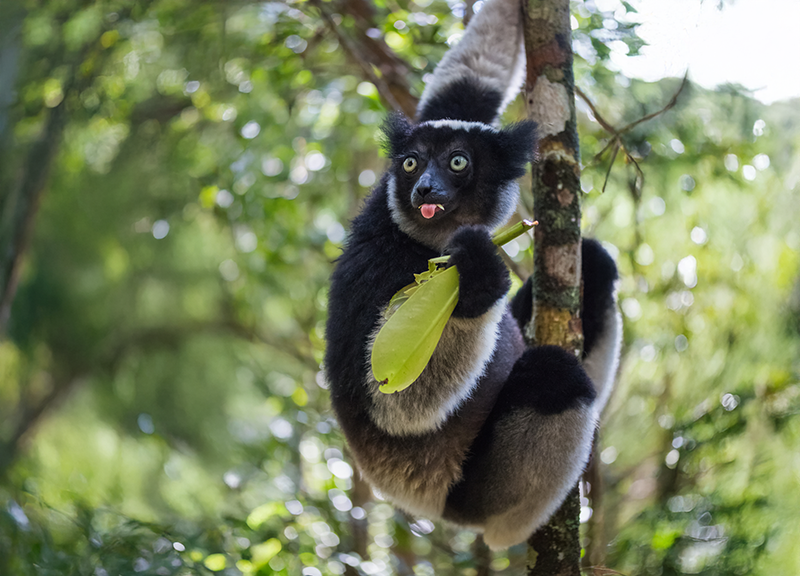
A Species on the Brink The Indri, often called the “singing lemur” for its haunting territorial calls, is Critically Endangered and found only in the eastern rainforests of Madagascar. With habitat loss accelerating across the island nation, protecting the remaining forest corridors is essential for this species’ survival. The Anjozorobe Angavo Protected Area represents one of the last strongholds for this remarkable primate. Since 1997, Association Fanamby—a Malagasy NGO and Conservation Allies partner committed to conserving Madagascar’s biodiversity—has been working tirelessly to protect its critical habitat. Community Rangers: The Frontline of Conservation With support from Conservation Allies, Fanamby has implemented an innovative community-based protection program specifically targeting poaching threats to the Indri. The cornerstone of this approach is the deployment of 138 local rangers (known as KMT – Komity Miaro ny Tontolo iainana) who conduct daily patrols within their home territories. These community rangers—four assigned to each of the 19 local villages—bring invaluable local knowledge to conservation efforts. Beyond patrolling, they serve as conservation ambassadors, raising awareness about the ecological importance of the Indri and reporting suspicious activities to mixed patrol teams. During the second half of 2024 alone, the KMT rangers patrolled a cumulative distance of 1,400 miles inside the park, demonstrating the scale and commitment of this conservation effort. A Remarkable Achievement The results have been extraordinary. According to Fanamby’s latest report, no poaching incidents involving the Indri have been recorded since 2023—a remarkable achievement for this IUCN Threatened species. “Thanks to the involvement of community patrols, local populations have become aware of the importance of this species for the ecosystem and have reported poaching activities,” noted Tsiory Rasoloarijao of Fanamby. “This represents a significant shift in community attitudes and practices.” Looking Forward While this success story represents a significant milestone, challenges remain. Illegal logging and slash-and-burn agriculture threaten the Indri’s forest home. According to the Madagascar Protected Area Outlook 2024, Anjozorobe Angavo Protected Area is Critically Endangered, having lost over 2% of its forest every year for the past 20 years. This horrific forest loss is now the major focus of efforts by Fanamby, together with Conservation Allies support. Through our continued partnership, we are helping to ensure that the call of the Indri will continue to echo through Madagascar’s forests for generations to come.
Drone Training Strengthens Indigenous-Led Rainforest Conservation

In the Amazon rainforests of Ecuador, a collaborative drone training workshop is empowering the Maikiuants, a Shuar Indigenous community, to better protect their ancestral territory. Supported by Conservation Allies, the University of Azuay GIS team in partnership with Ecoforensics provided ten indigenous paraecologists with hands-on training in drone operation and mapping. Held in southern Ecuador’s Morona Santiago province—where pressures from expanding gold mining concessions pose a growing threat to both people and biodiversity—the workshop focused on the legal and technical aspects of drone use. Participants received instruction on drone regulations, flight safety, and image collection before applying their skills in the field to capture photos and videos of their territory. Drone technology offers an invaluable tool for indigenous communities like the Maikiuants to monitor land use, detect illegal encroachments, and document ecological changes. By creating detailed territorial maps, they can bolster land claims, plan patrol routes more effectively, and provide visual evidence to defend their forests in court. Undergraduate biology students from the University of Azuay, together with Lourdes Nunez, the Latin America Conservation Officer at Conservation Allies, also assisted with drone training and mapping work while gaining a deeper understanding of how indigenous knowledge and modern tools can align to protect the Amazon rainforests. This initiative is part of a broader strategy to strengthen indigenous-led conservation by merging traditional stewardship with scientific and legal resources. It supports Ecuador’s progressive legal framework, which recognizes the rights of nature—an approach that allows ecosystems themselves to be represented in legal proceedings. By equipping communities with the tools to assert these rights, this partnership reinforces both the autonomy of Indigenous land defenders and the protection of critical Amazonian rainforest lands.
Local Authorities and Communities Unite to Protect Critically Endangered Bora Reserve
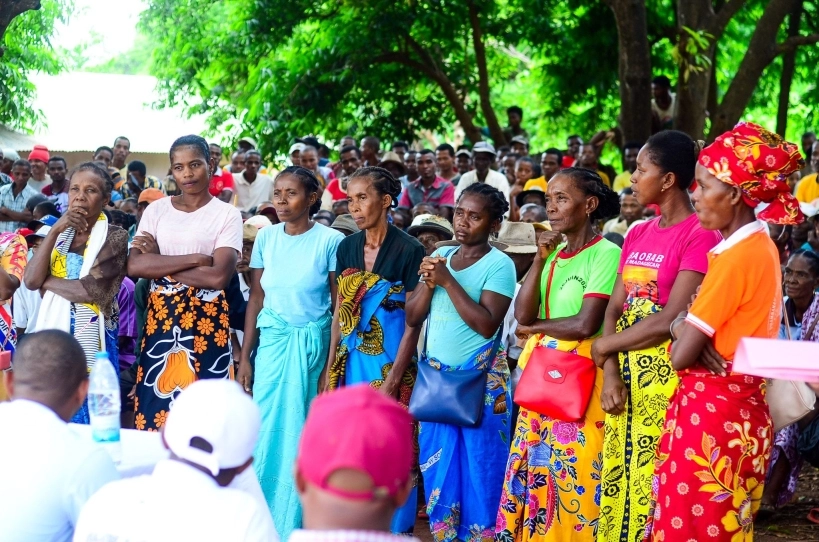
The Bora Special Reserve in Madagascar, classified as a Critically Endangered Protected Area, is facing severe threats due to deforestation and agricultural expansion. In response, Conservation Allies Madagascar Conservation Officer Audlin Ramiandra recently visited the reserve to assess its condition and discuss conservation strategies with local and regional authorities, together with the community. This visit has sparked a significant effort to safeguard this vital ecosystem. Following Audlin’s visit, the Governor and the Regional Director of Environment and Sustainable Development (DREDD) of the Sofia Region conducted a special mission to Anjalazala Commune, a key area involved in protecting Bora Special Reserve. The mission aimed to raise awareness among local communities about the importance of conservation, highlight the financial support provided by Conservation Allies, and encourage collaborative efforts to protect biodiversity while promoting sustainable development. The local population expressed a strong willingness to collaborate and even committed to preserving the reserve. In the past, authorities have struggled to enforce conservation measures owing to financial constraints, which has led to extensive deforestation as both local communities and migrants from other regions of Madagascar have converted large portions of the forest into corn fields. As part of our commitment to conservation, Conservation Allies has pledged funding to support the reserve’s protection efforts. This announcement has been met with great enthusiasm from regional authorities, who recognize the critical role of Bora Special Reserve in maintaining the region’s ecological balance. Surrounding communities are also being engaged to protect the Bora Reserve and will be rewarded with community livelihood improvement investments should they stop future deforestation as shown in Global Forest Watch. To reinforce the conservation message, the Governor and the Regional Forest Director visited villages surrounding the reserve, directly addressing the community. They emphasized the legal protections in place and warned against further deforestation and agricultural expansion. Authorities made it clear that violations—such as unauthorized farming, illegal burning, and deforestation—would be met with strict enforcement measures. This mission marks a crucial step forward in ensuring the survival of the Bora Special Reserve. With the continued support of Conservation Allies and the cooperation of local communities and authorities, there is renewed hope for preserving one of Madagascar’s most threatened ecosystems.
New Plant Species Discovered in Colombia’s Cloud Forest
In an exciting scientific discovery, a new species of orchid, the Rasmussen Star Orchid (Epidendrum rasmussenii), has been discovered in the cloud forests of the Sierra Nevada de Santa Marta, Colombia. This remarkable find by Conservation Allies partner Fundación ProAves underscores the region’s extraordinary biodiversity and highlights the urgency of conservation efforts in these forests, one of the world’s most ecologically significant areas. The Rasmussen Star Orchid is named in honor of Nathan Jens Rasmussen, whose family has played a crucial role in supporting conservation initiatives to protect the biodiversity of the Sierra Nevada de Santa Marta. The orchid was identified within the El Dorado Nature Reserve, a protected area managed by Fundación ProAves, with support from Conservation Allies, that serves as a sanctuary for Colombia’s endemic and endangered species. The striking orchid, closely related to Epidendrum stenostachyum, is distinguished by its vibrant red-carmin and yellow-green flowers. Due to its highly restricted habitat, it is currently classified as an endangered species, reinforcing the need for continued conservation measures to protect the fragile ecosystems it depends on. “We are thrilled to support important discoveries like this one,” said Dr. Paul Salaman, President of Conservation Allies. “Rasmussen Star Orchid highlights the extraordinary biodiversity of Colombia and the critical need for sustained research and conservation efforts to protect the country’s endangered forests.” This discovery is a testament to the importance of protected areas like El Dorado Nature Reserve in preserving Colombia’s unique flora and fauna. Through scientific research, fieldwork, and dedicated conservation efforts, Fundación ProAves and other Conservation Allies partners continue to safeguard these vital ecosystems for future generations.
